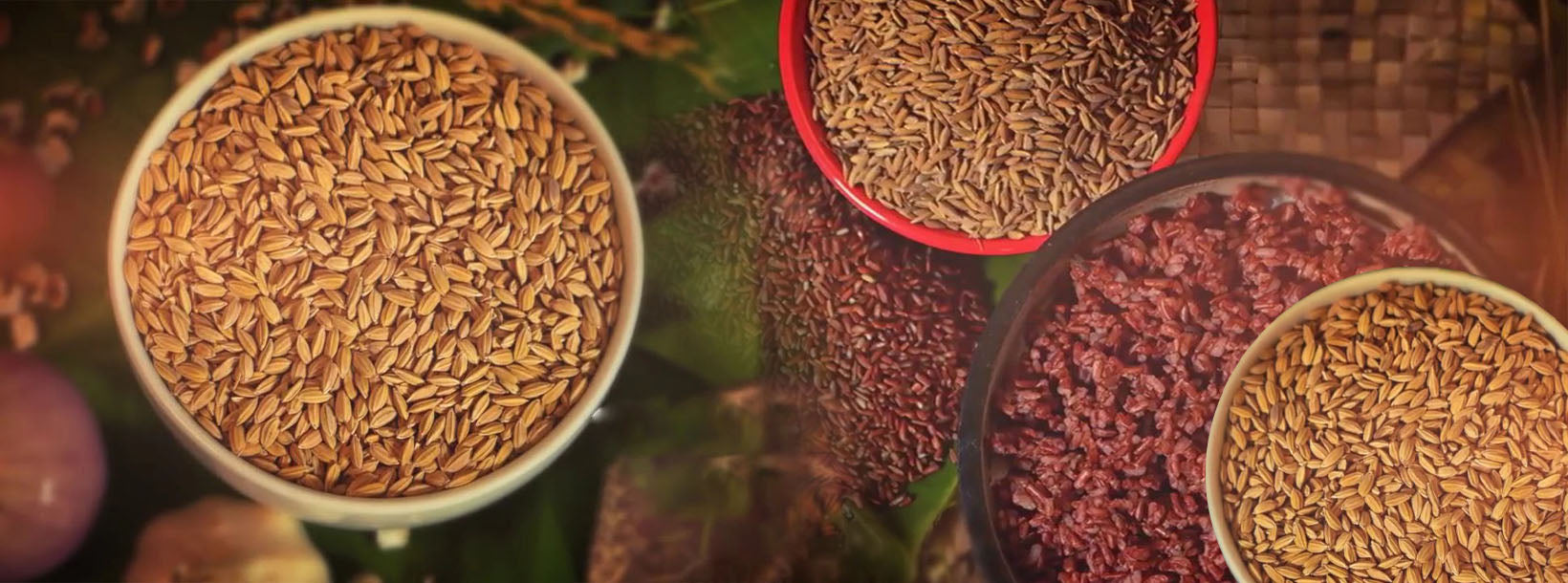
Arroz Tradicional
O cultivo de arroz tem uma longa e paralela relação com a história e a cultura do país, e o Sri Lanka pratica um estilo de vida baseado na agricultura há 3 milênios. De acordo com evidências coletadas por meio da história escrita e da arqueologia, o cultivo de arroz na ilha remonta ao período de 900 a 600 a.C.
Arroz Tradicional
No Sri Lanka o arroz é cultivado desde 800 a.C., e isso é ainda apoiado por enormes estruturas de irrigação desde 390 a.C. Durante esse período, Sri Lanka era conhecido como o celeiro do Oriente, e foi relatada a existência de cerca de 2000 variedades nativas de arroz. No início do século XX, cerca de 567 variedades tradicionais de arroz foram documentadas. Essas variedades se adaptaram a diferentes ecologias de cultivo de arroz nas áreas de alta altitude e de terras baixas do país, através da evolução natural e da seleção não intencional feita por nossos antepassados.
Como as variedades tradicionais estavam misturadas devido à negligência dos governantes estrangeiros, os cientistas do Departamento de Agricultura adotaram, na década de 1920, um processo de purificação e recomendaram linhas puras para cultivo; as variedades tradicionais atuais são principalmente o resultado dessas linhas puras. Essas variedades apresentavam diversidade suficiente para se ajustar aos diversos ambientes de cultivo de arroz e às preferências dos consumidores. Portanto, as variedades tradicionais de arroz possuem adaptabilidade específica, em vez de adaptabilidade geral.
A maioria das variedades tem um longo período de maturação de 4-6 meses, do plantio à colheita. Pouquíssimas variedades tinham um período de maturação de 2½ a 3½ meses. A maioria das variedades tradicionais de arroz é vermelha, e apenas algumas têm a cor do pericarpo branca. Algumas variedades tradicionais são altamente sensíveis ao fotoperíodo e florescem apenas quando expostas a dias curtos no mês de dezembro, de modo que só podem ser cultivadas durante a estação maha no país. A arquitetura tradicional das plantas é muito primitiva, com colmos altos e fracos que tendem a tombar durante o cultivo. O índice de colheita das variedades tradicionais é inferior a 0,3, indicando que o conteúdo de biomassa é maior do que a quantidade de grãos produzidos por planta, levando a baixos rendimentos. A adaptabilidade específica, a resistência a estresses abióticos e a resistência ou suscetibilidade única a algumas principais pragas e doenças são relatadas nas variedades tradicionais.
As propriedades nutricionais e medicinais dessas variedades são reconhecidas no conhecimento tradicional do Sri Lanka. Essas propriedades são diversas e incluem a capacidade de melhorar o sistema imunológico, a força corporal e a força sexual, facilitar a digestão, a excreção e reduzir as toxinas no corpo, sendo usadas para tratar febre, diabetes, constipação, problemas urinários, obesidade, tuberculose, hematêmese (vômito de sangue) e para tratar pessoas intoxicadas com veneno de cobra. Pesquisas realizadas nos últimos anos validaram cientificamente algumas dessas alegações tradicionais e mostraram claramente que o arroz tradicional do Sri Lanka, especialmente o arroz vermelho, possui propriedades medicinais benéficas para inflamação, diabetes, câncer, doenças neurológicas, colesterol e estresse oxidativo. Assim, o uso e a aplicação desses valiosos recursos genéticos tradicionais ou nativos de arroz no país podem melhorar efetivamente o estado nutricional e de saúde das pessoas no Sri Lanka. Além disso, a enorme diversidade existente nas variedades tradicionais de arroz exige sua conservação e utilização para melhorias futuras a fim de atender à demanda futura de arroz e também pode fornecer soluções para os problemas agrícolas e ambientais do país e do mundo. Portanto, vamos preservar nosso tesouro de variedades tradicionais de arroz, evoluídas naturalmente, para garantir a segurança alimentar e ambiental no futuro.
Downloads:
-
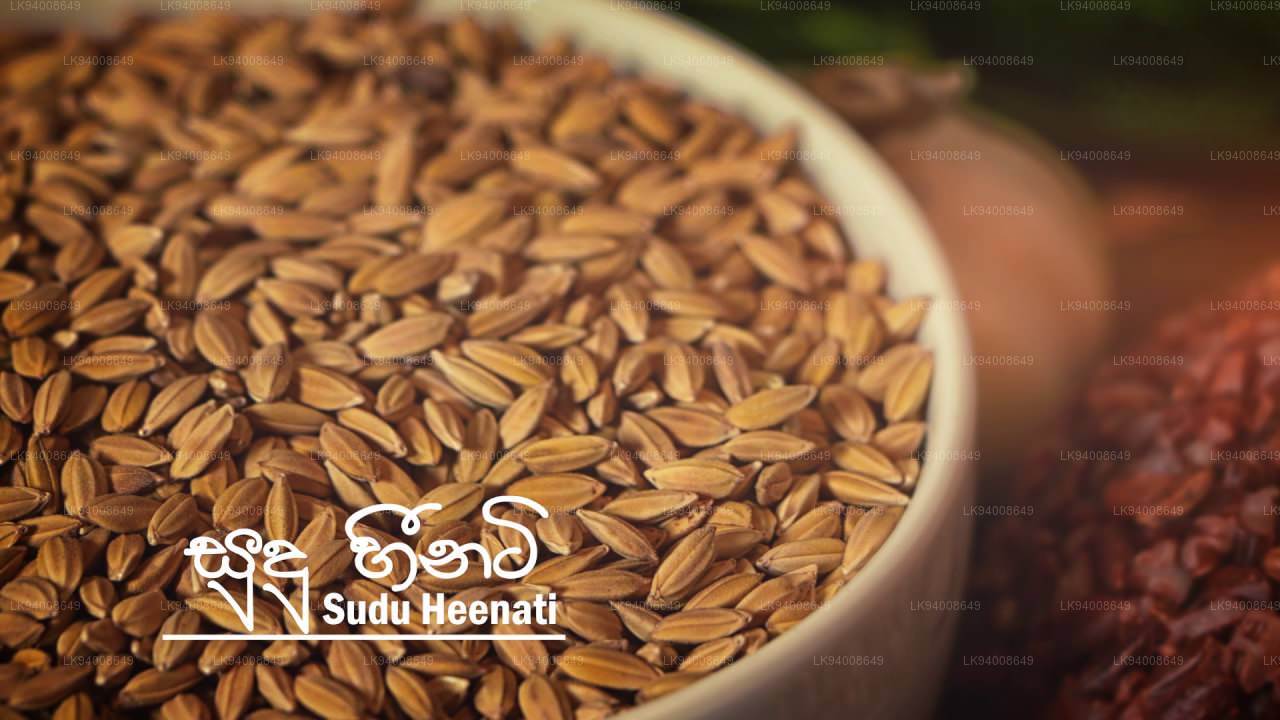 Sudu Heeneti
Sudu HeenetiUma pequena variedade de arroz branco tradicional, o Sudu Heeneti é altamente nutritivo, rico em antioxidantes e ideal para dietas medicinais tradicionais do Sri Lanka. Possui textura macia e sabor suave e terroso.
-
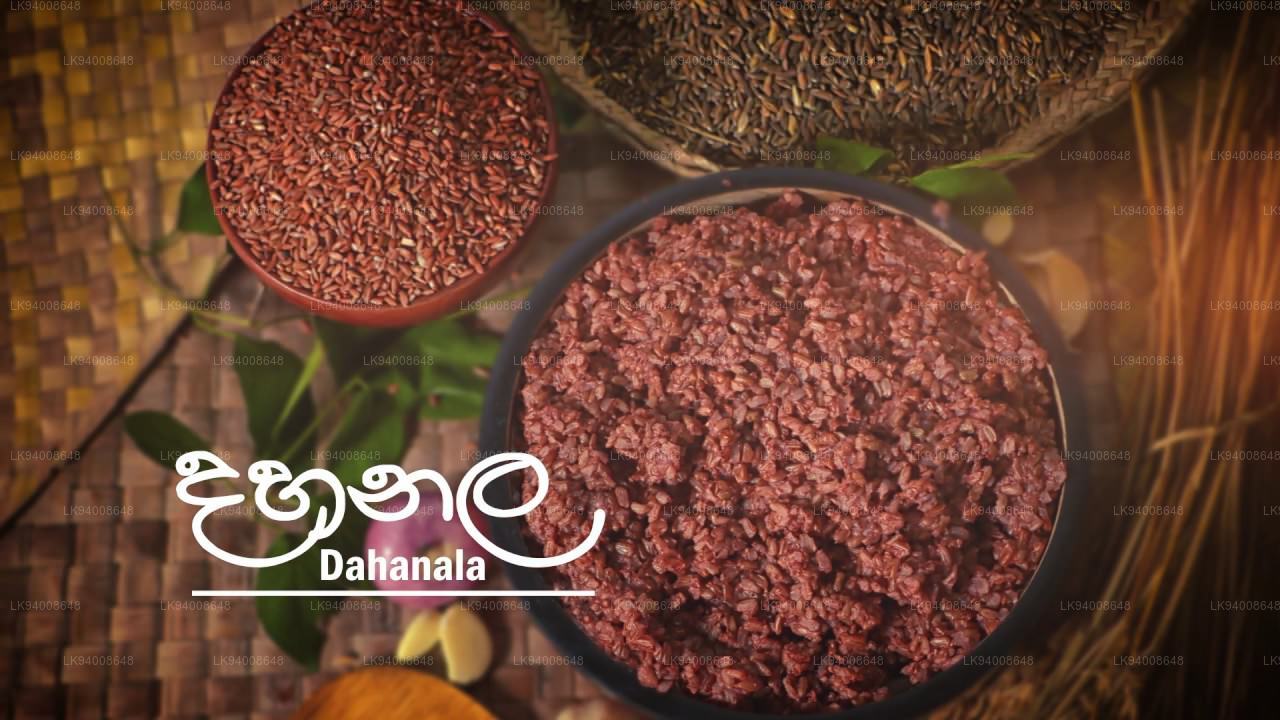 Dahanala
DahanalaDahanala é um arroz tradicional raro, rico em nutrientes e com uma tonalidade avermelhada. É apreciado por seu alto teor de fibras e sabor suave e doce, tornando-o perfeito para mingaus e refeições saudáveis.
-
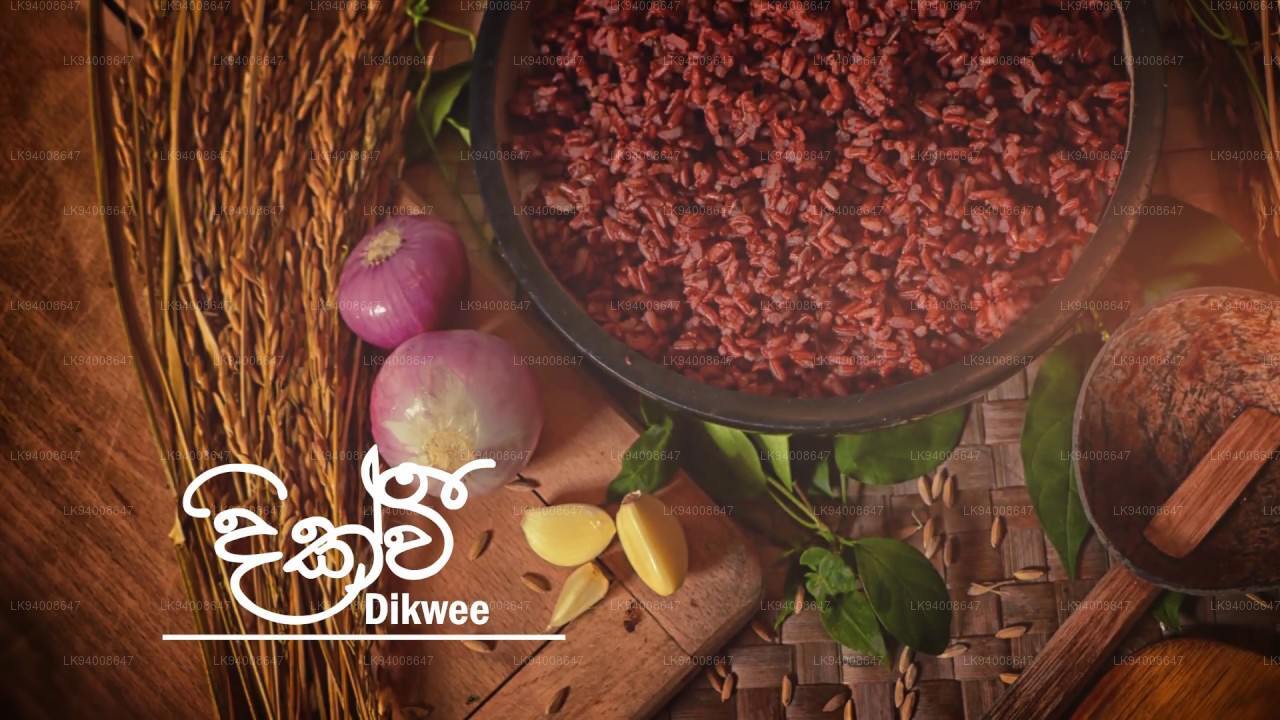 Dik Wee
Dik WeeDik Wee is a medium-grain red rice variety traditionally cultivated in Sri Lanka. The plant develops to a maximum height of 150 cm. This crop can be harvested within 4 to 4½ months from seeding.
-
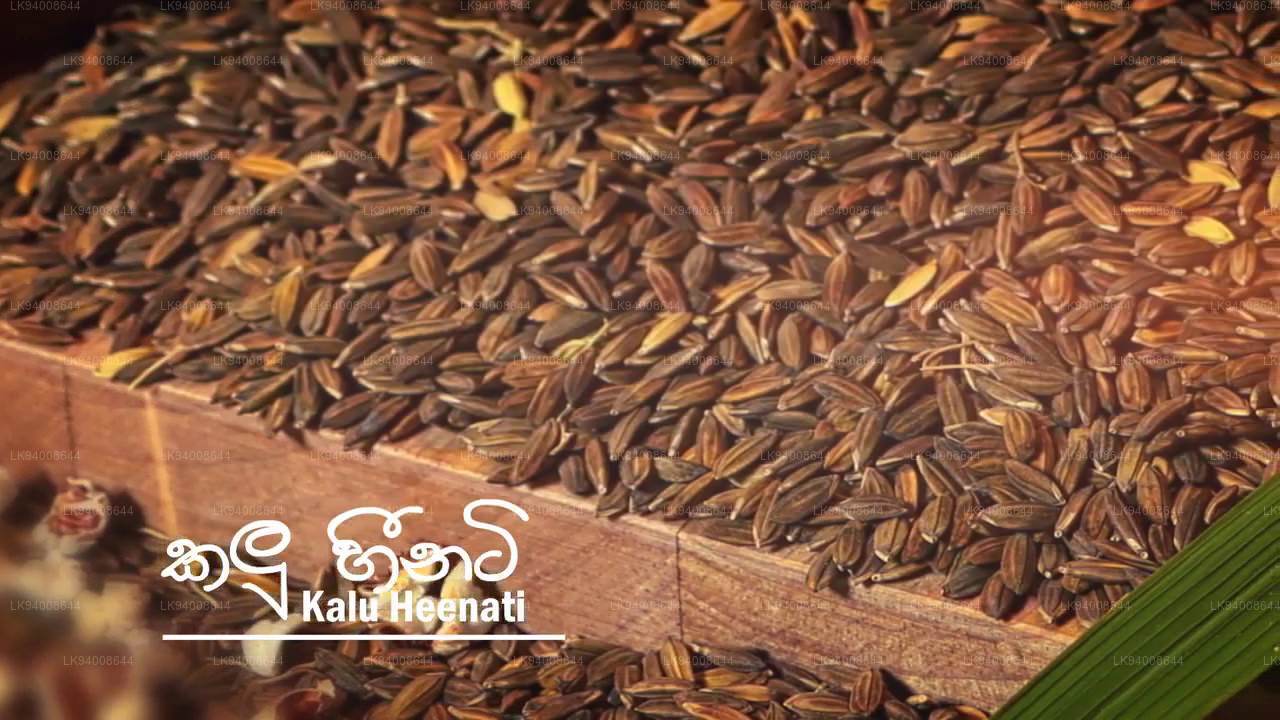 Kalu Heeneti
Kalu HeenetiEsta variedade de arroz é chamada de Kalu Heeneti devido à cor de seu lema e pálea, que se tornam enegrecidas ao amadurecer. É tradicionalmente cultivada no Sri Lanka e produz um grão vermelho de tamanho médio. A planta atinge uma altura máxima de 120 cm.
-
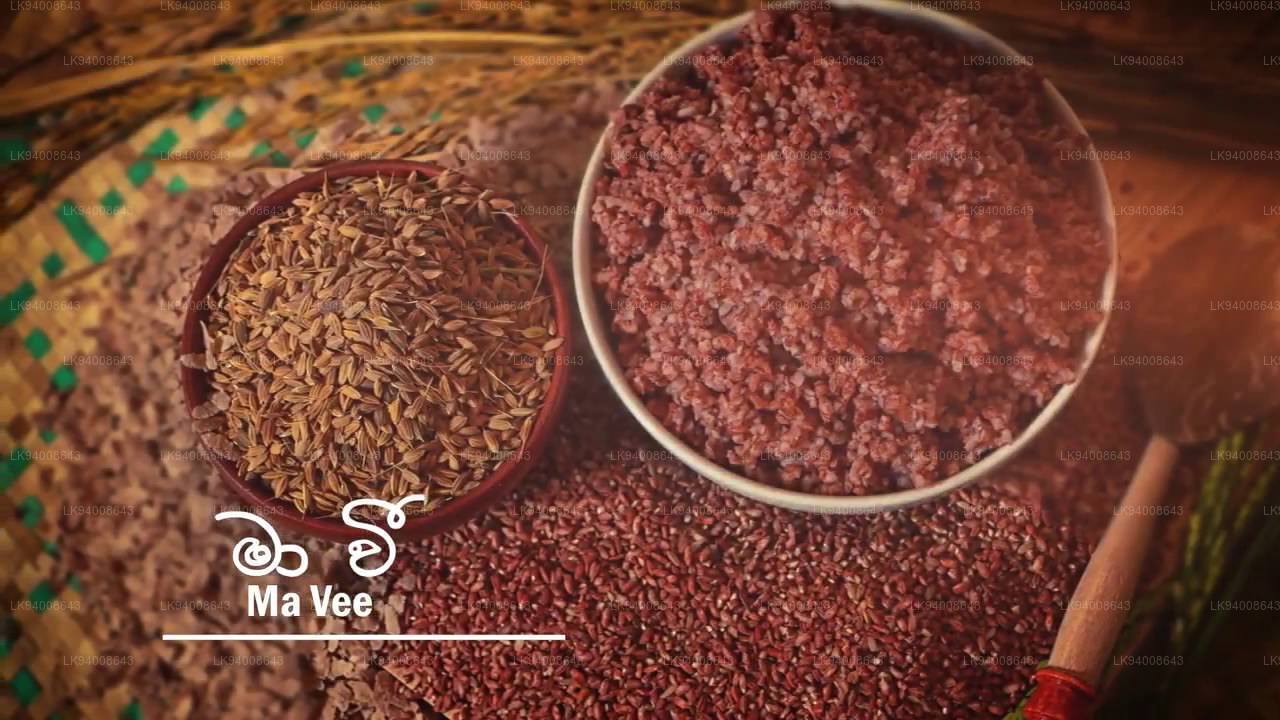 Ma Wee
Ma WeeMa Wee é uma variedade de arroz vermelho tradicionalmente cultivada no Sri Lanka. O grão varia em tamanho e formato, desde variedades curtas e redondas até variedades longas e médias. É uma das plantas de arroz mais altas cultivadas, atingindo uma altura máxima de 350 cm.
-
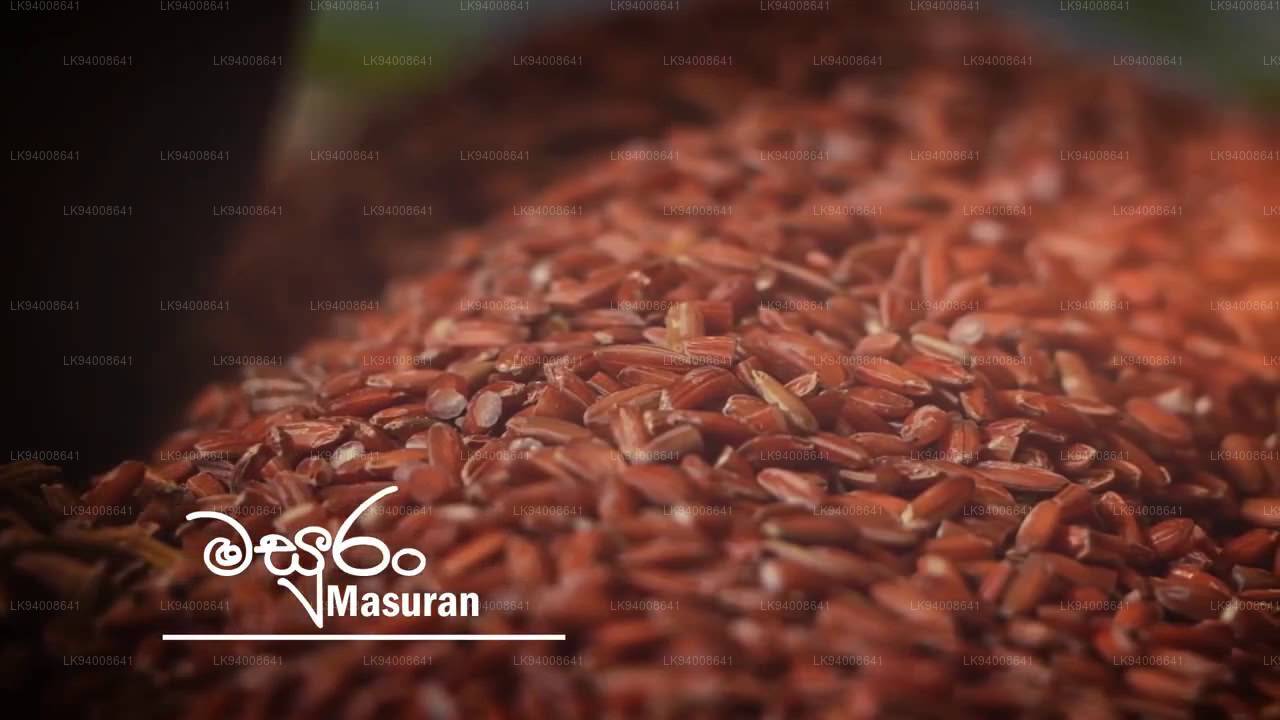 Masuran
MasuranMasuran é uma variedade popular de arroz vermelho de grão médio, tradicionalmente cultivada no Sri Lanka. A planta atinge uma altura máxima de 120 cm e é resistente ao acamamento. Esta cultura pode ser colhida em até 3 meses e meio após a semeadura durante a temporada de Yala e em até 4 meses e meio na temporada de Maha.
-
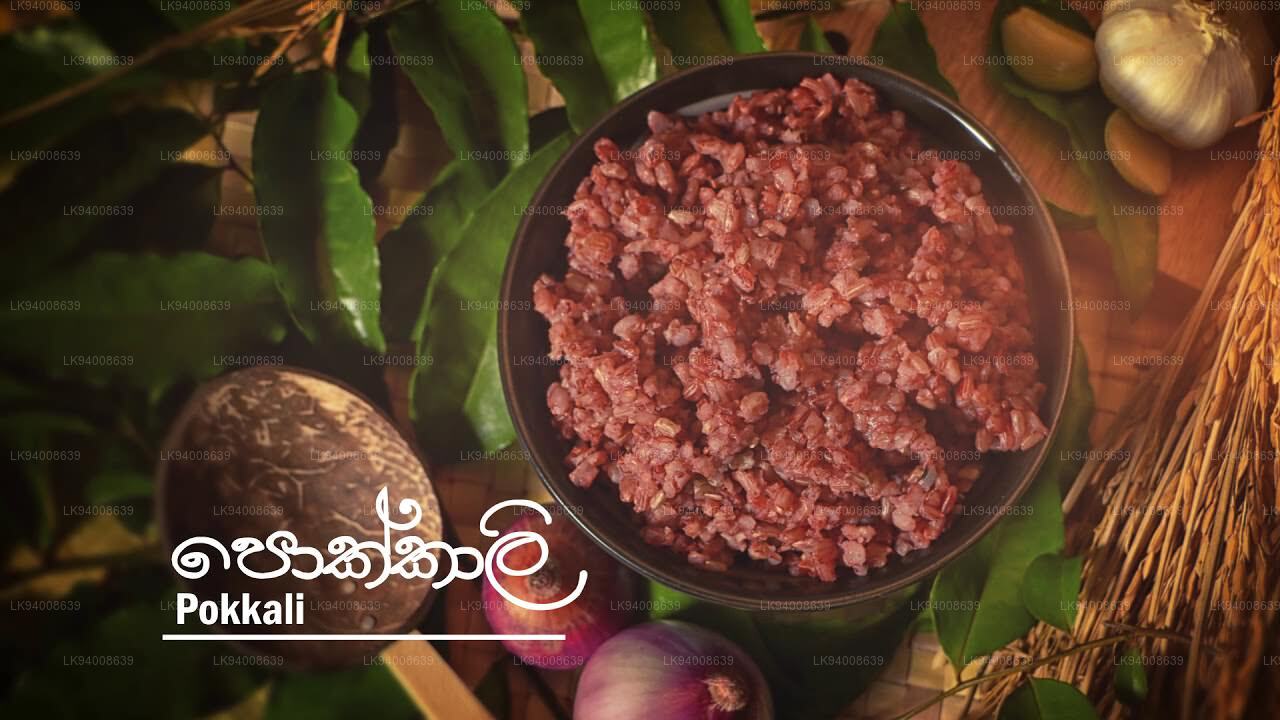 Pokkali
PokkaliPokkali é uma variedade popular de arroz vermelho, tradicionalmente cultivada no Sri Lanka. O colmo da planta tem cerca de 130 cm de altura e produz cerca de 10 perfilhos por planta. Esta cultura pode ser colhida em até 3 meses e meio após a semeadura.
-
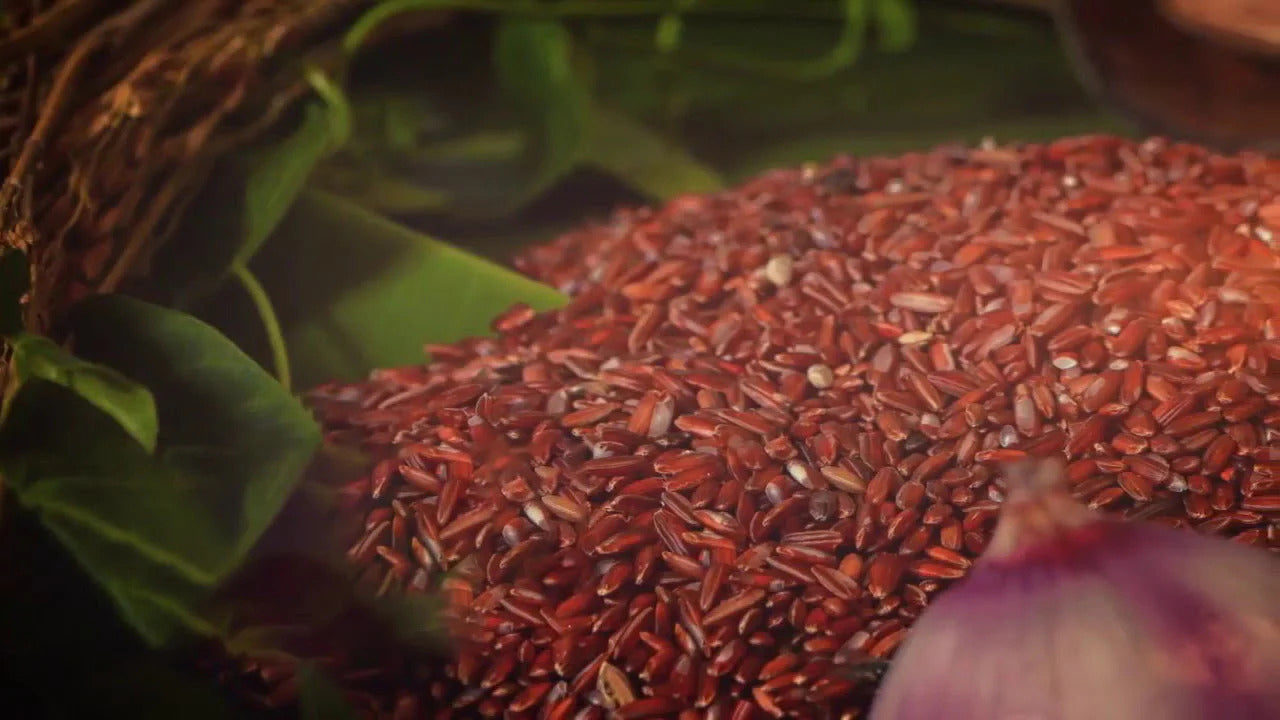 Pachchaperumal
PachchaperumalPachchaperumal é uma variedade de arroz vermelho de grão médio muito popular, tradicionalmente cultivada no Sri Lanka. A planta atinge uma altura máxima de 120 cm. Esta cultura pode ser colhida em até 3 meses e meio após a semeadura. Na fase de maturação, o caule da planta adquire uma coloração azulada clara.
-
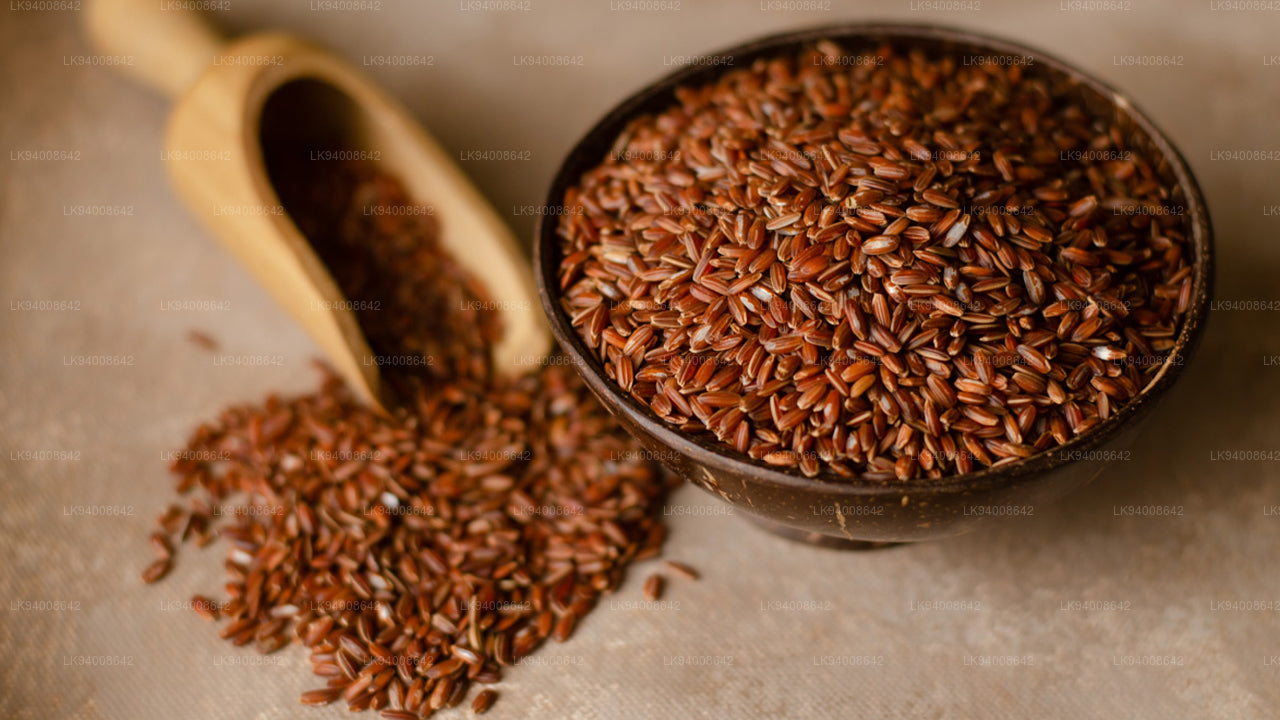 Madathawalu
MadathawaluMadathawalu é uma variedade de arroz vermelho de grão curto muito popular, tradicionalmente cultivada no Sri Lanka. A planta atinge uma altura máxima de 130 cm. Esta cultura pode ser colhida em até 4 meses após a semeadura.
-
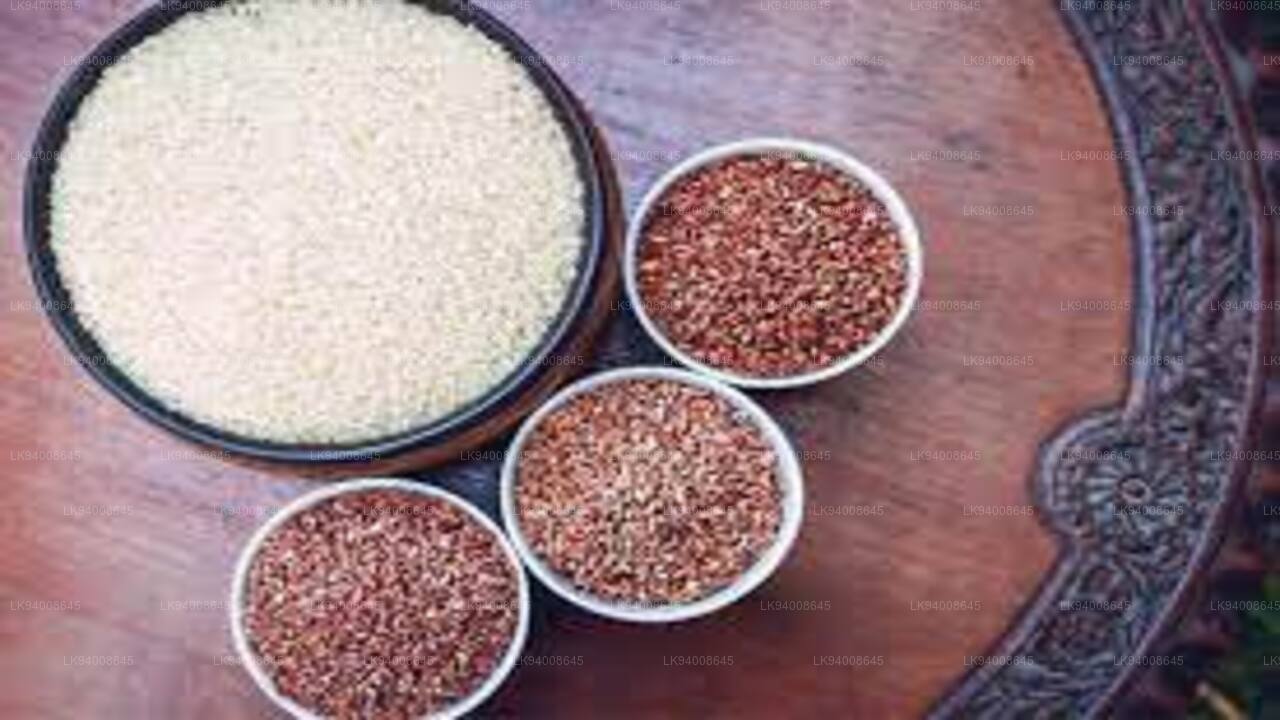 Gonabaru
GonabaruGonabaru é uma variedade popular de arroz de grão médio, tradicionalmente cultivada no Sri Lanka. A planta atinge uma altura máxima de 140 cm. Esta cultura pode ser colhida em até 5 meses após a semeadura.
-
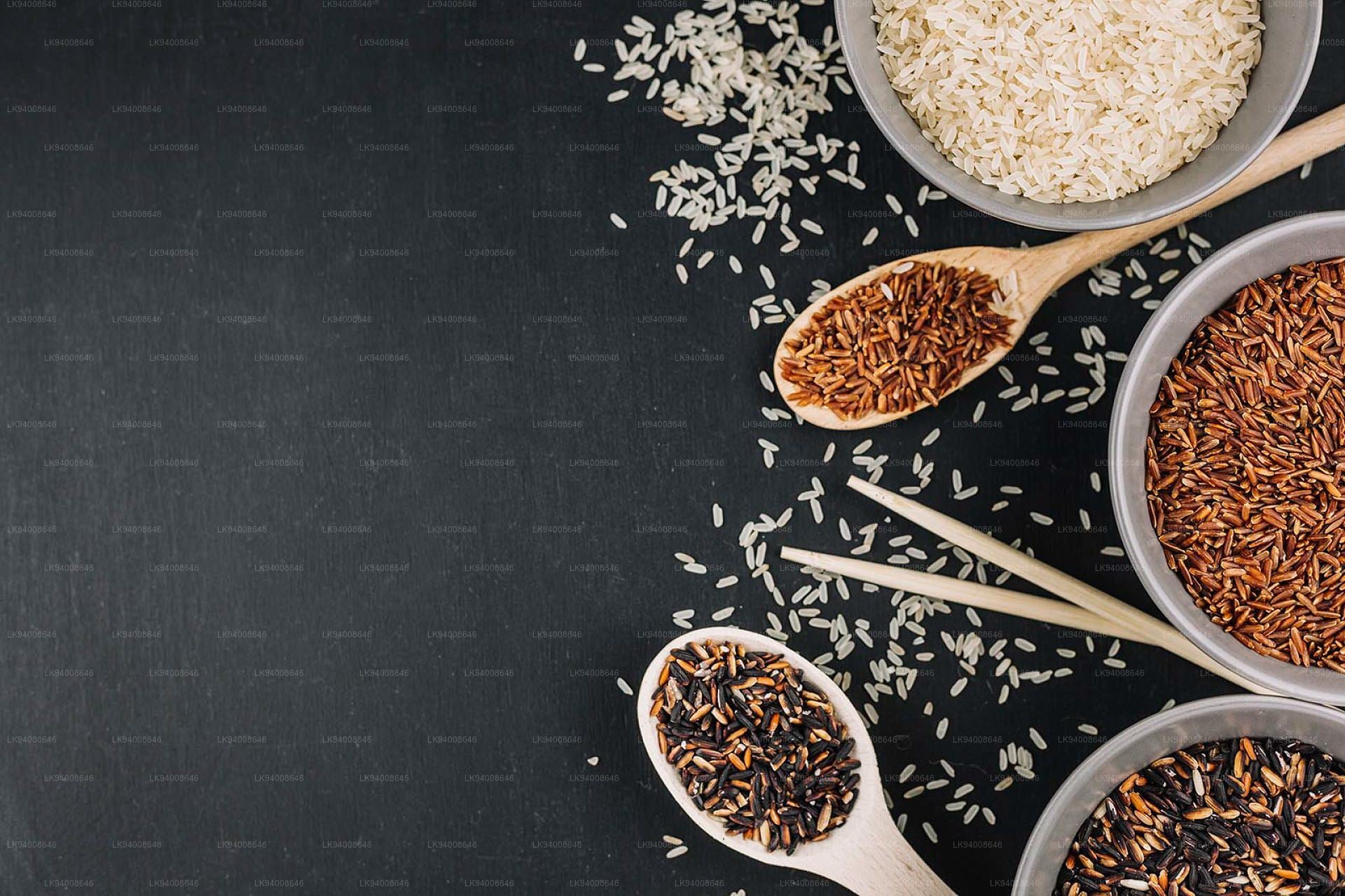 Goda Heeneti
Goda HeenetiGodaheeneti is a popular medium-grain red rice variety traditionally cultivated in Sri Lanka, which belongs to the heeneti type. The plant develops to a maximum height of 160 cm. This crop can be harvested within 3½ months from seeding.
-
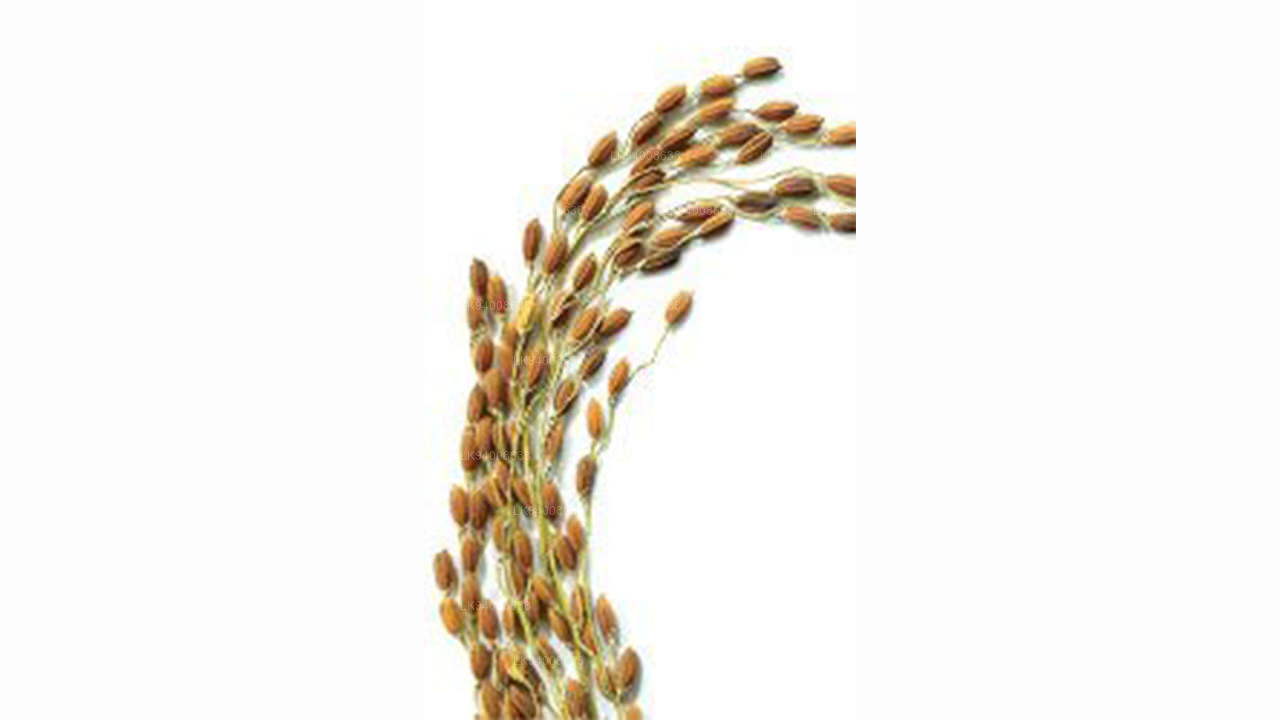 Rath Suwandal
Rath SuwandalRathsuwandal é uma variedade popular de arroz vermelho de grão médio, tradicionalmente cultivada no Sri Lanka. A planta atinge uma altura máxima de 120 cm. Esta cultura pode ser colhida em até 3 meses e meio após a semeadura.
















